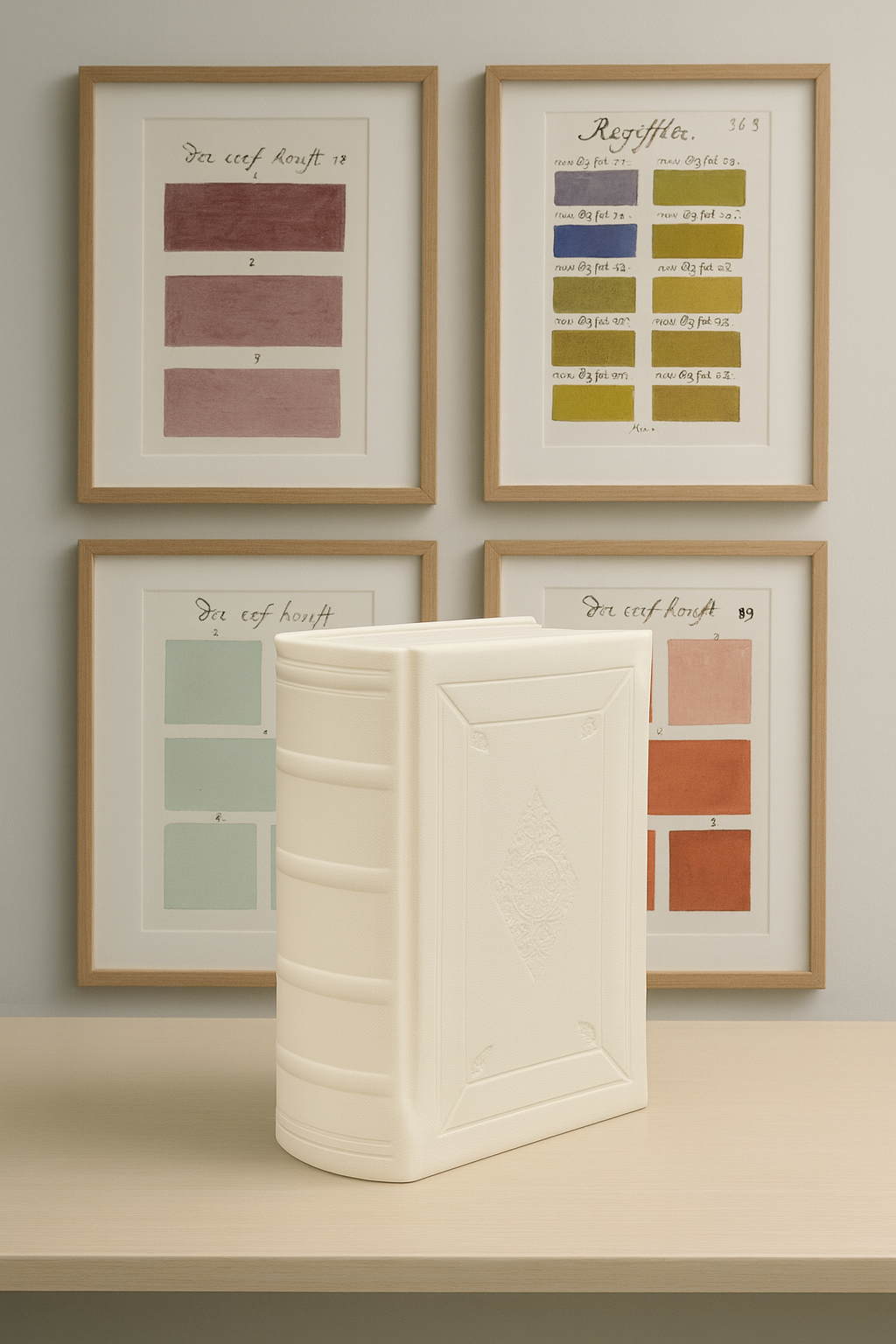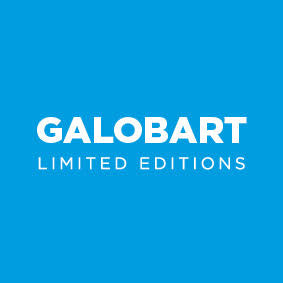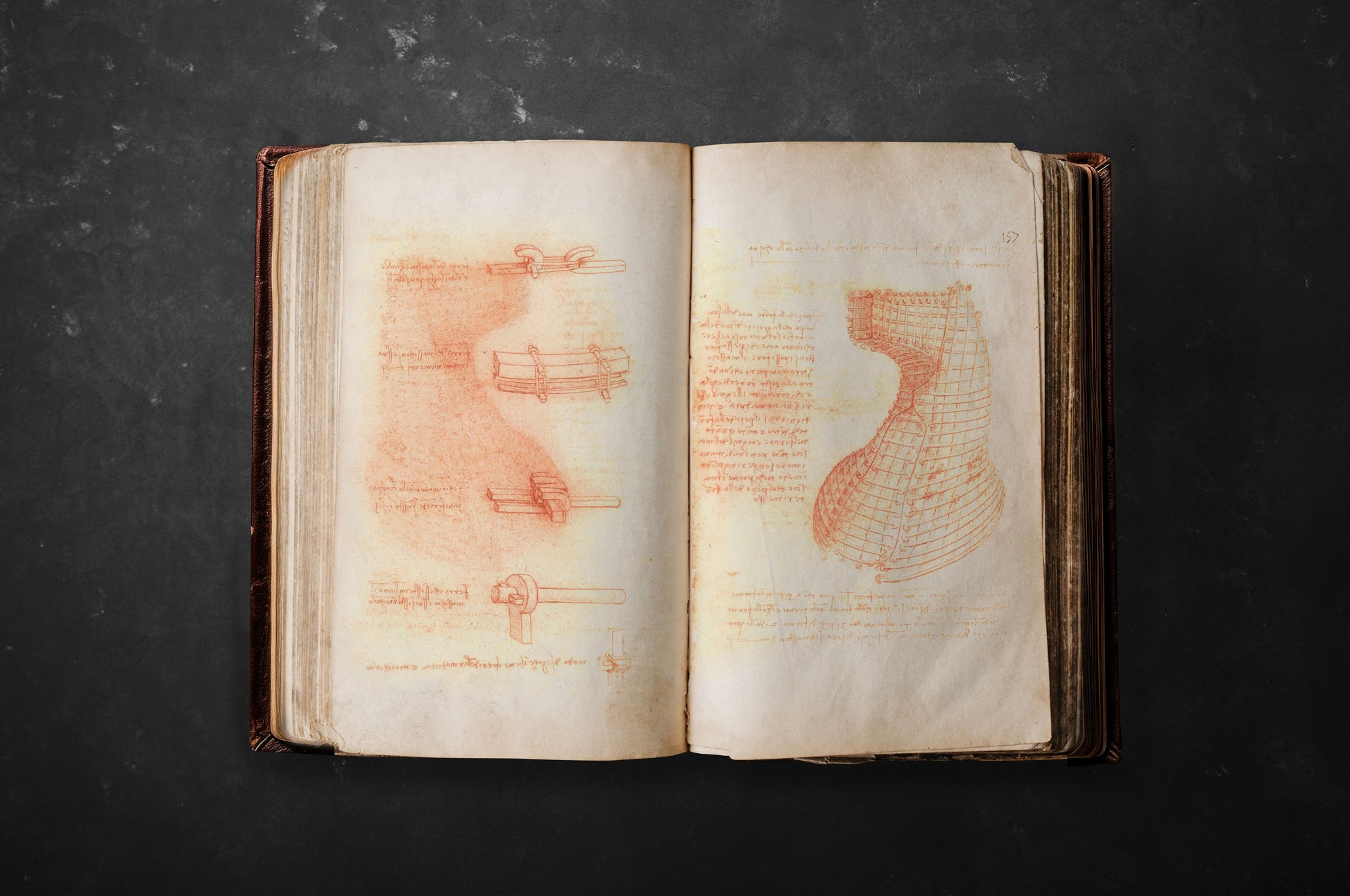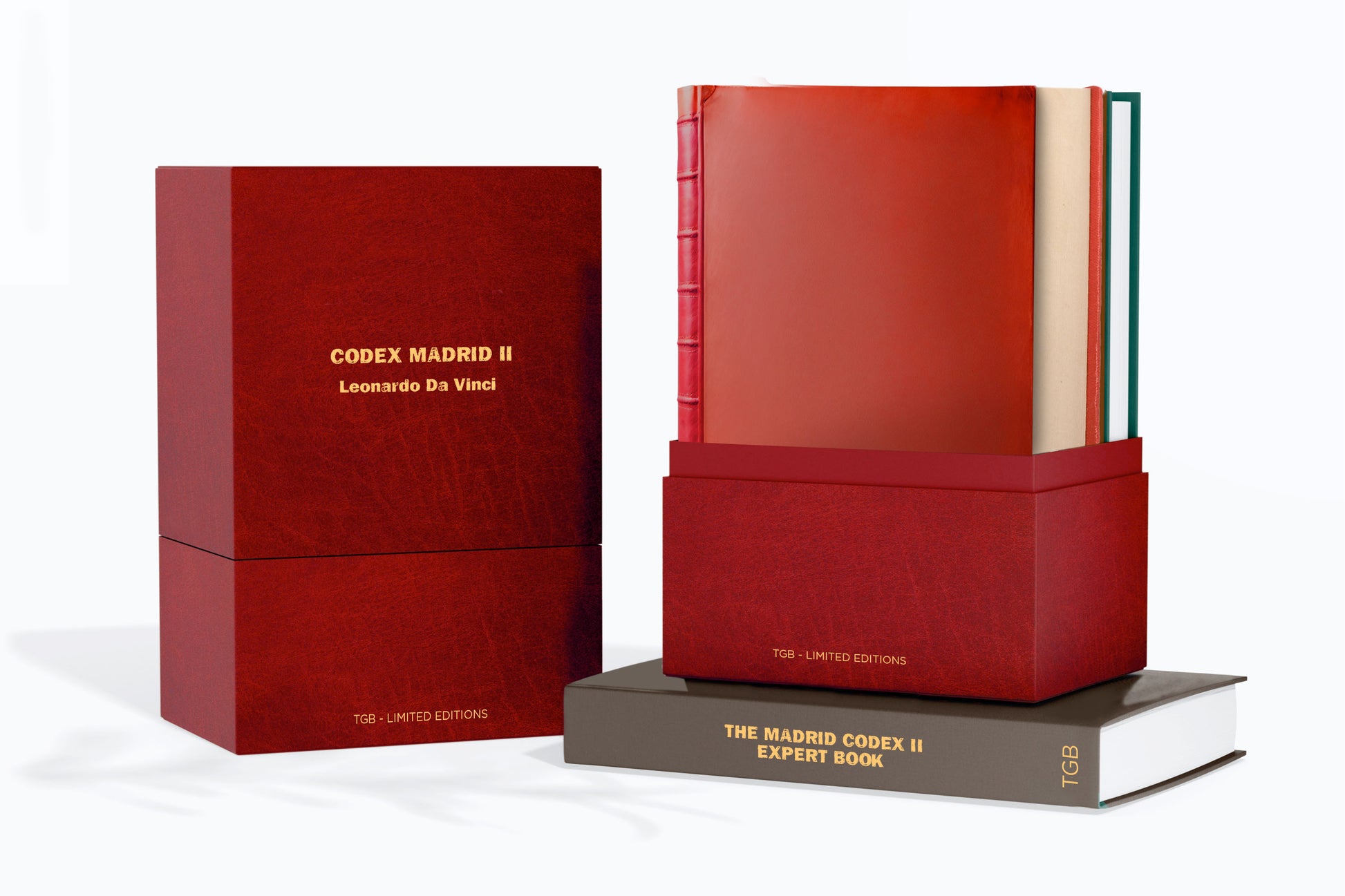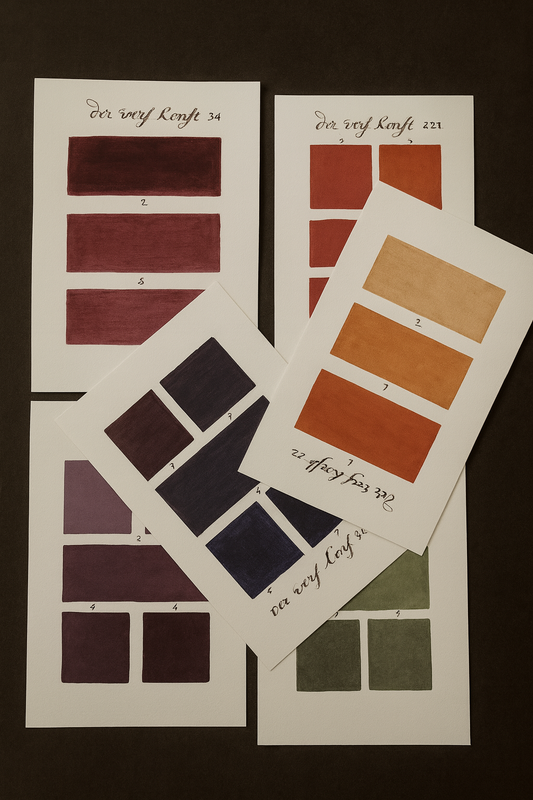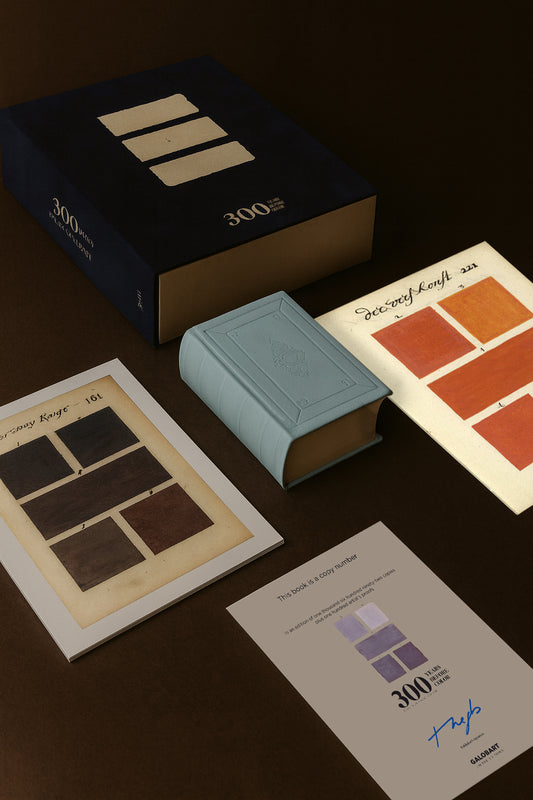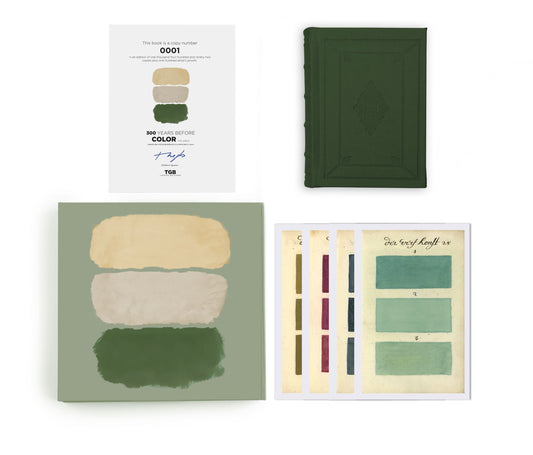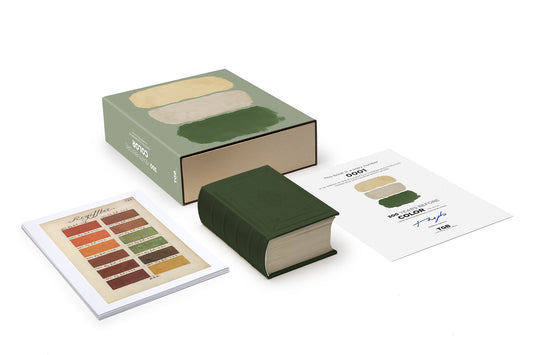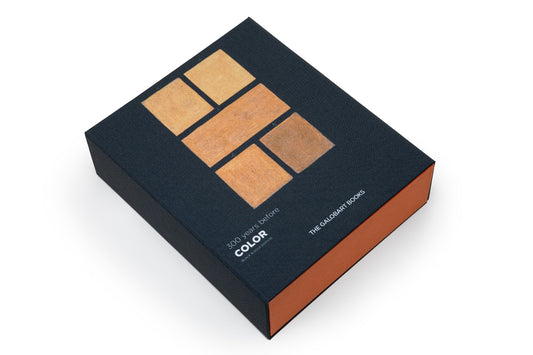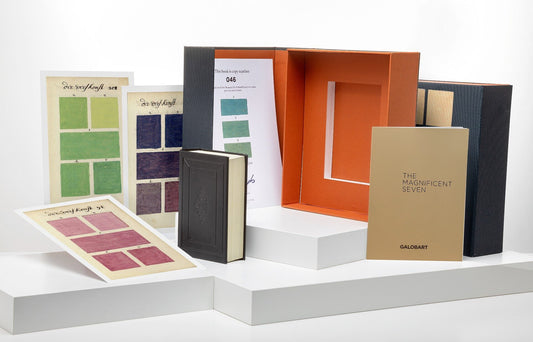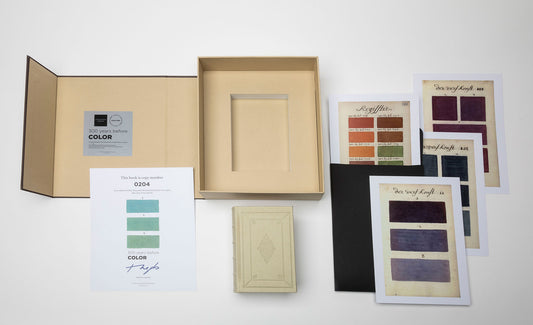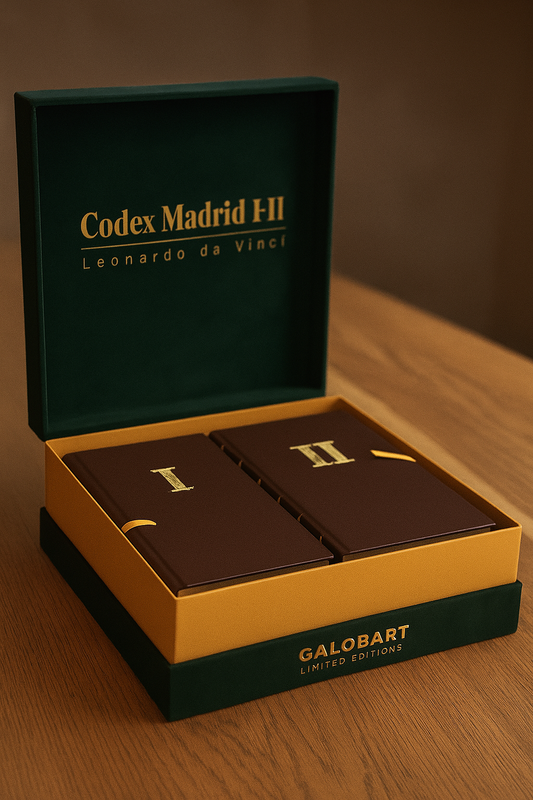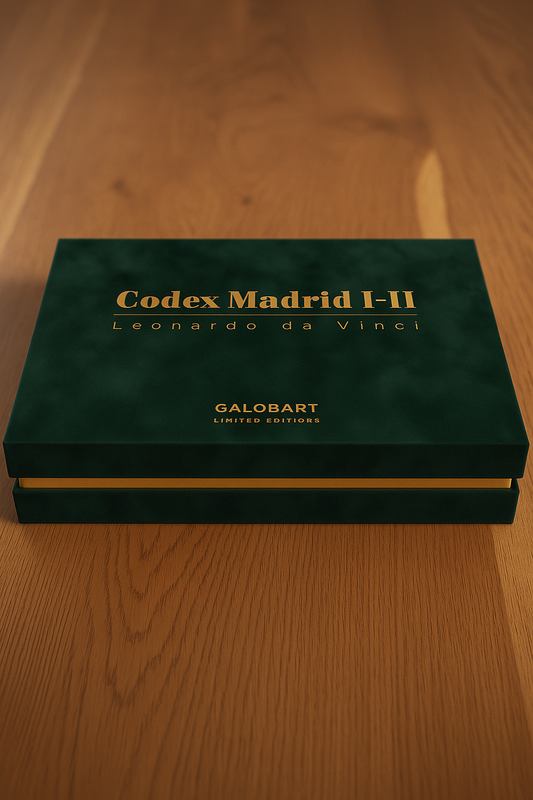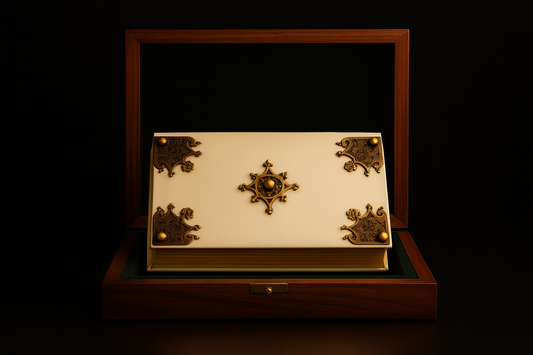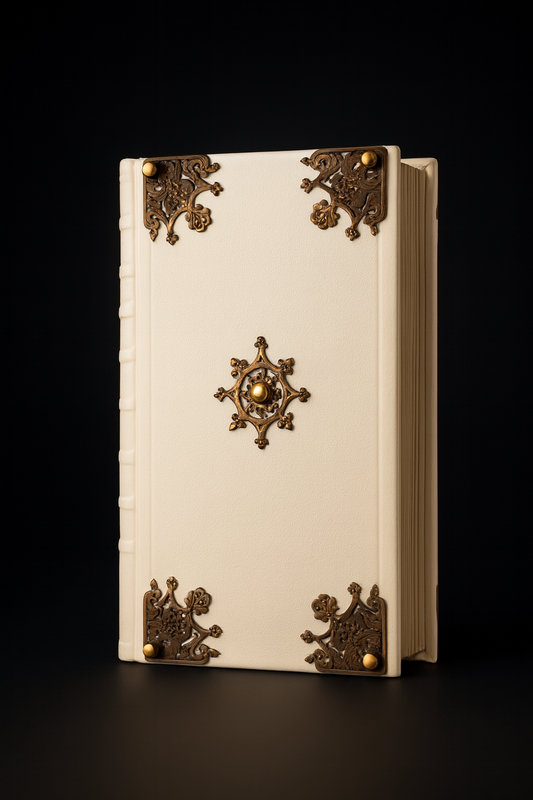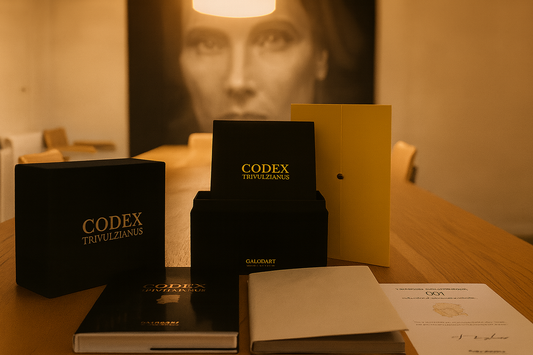CODEX MADRID II ( LEONARDO DA VINCI)
COLLECTOR'S EDITION
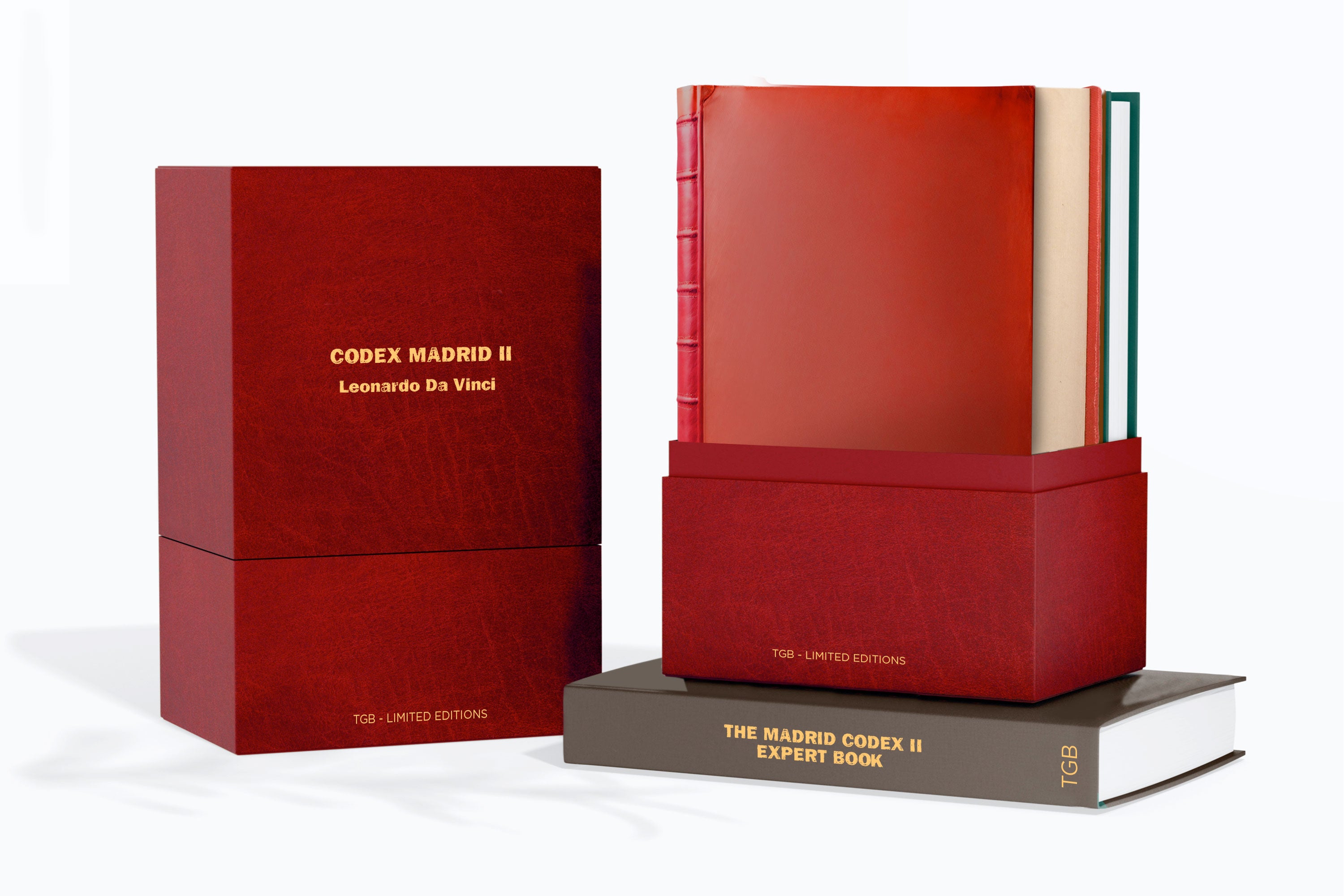
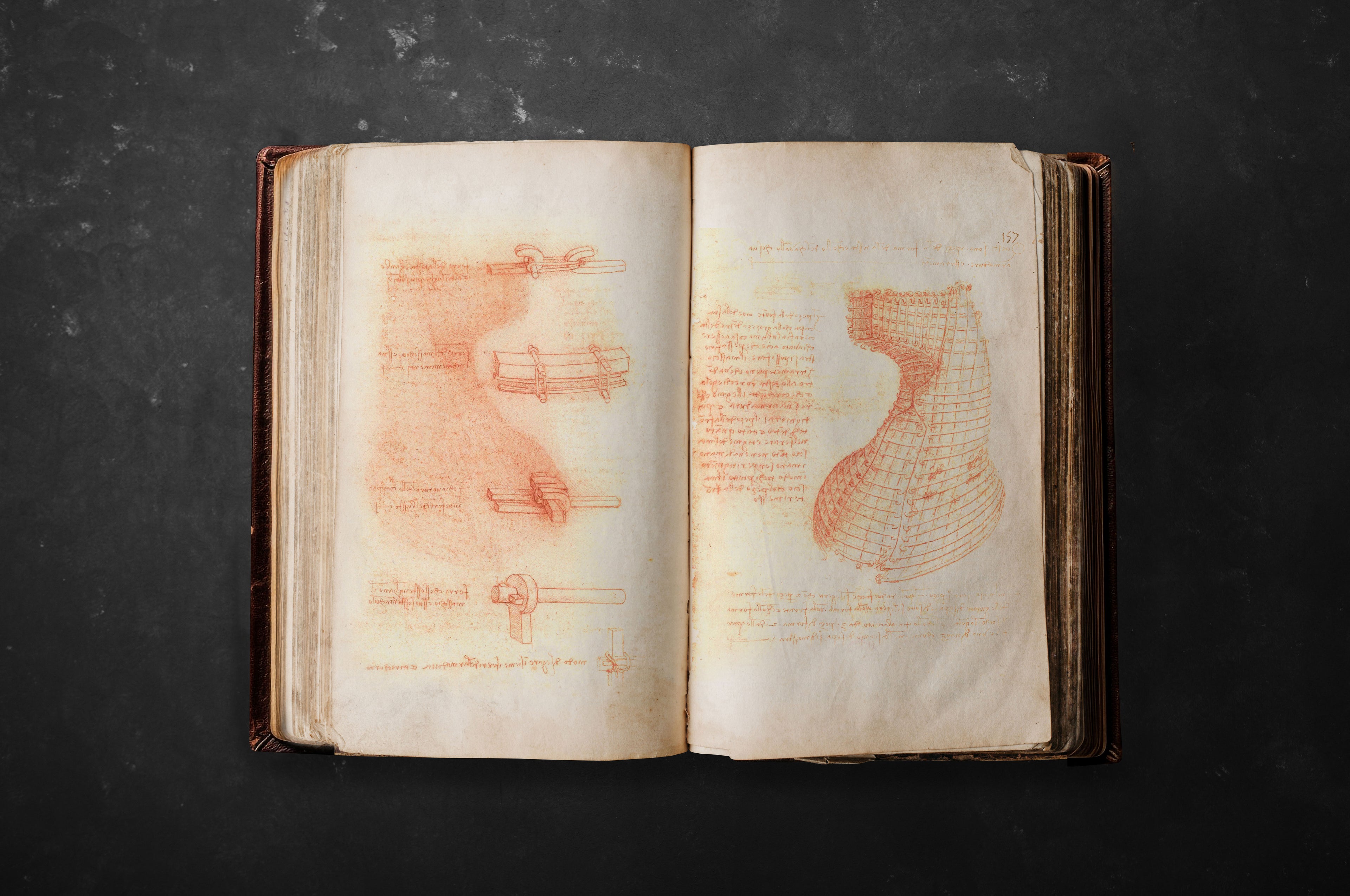
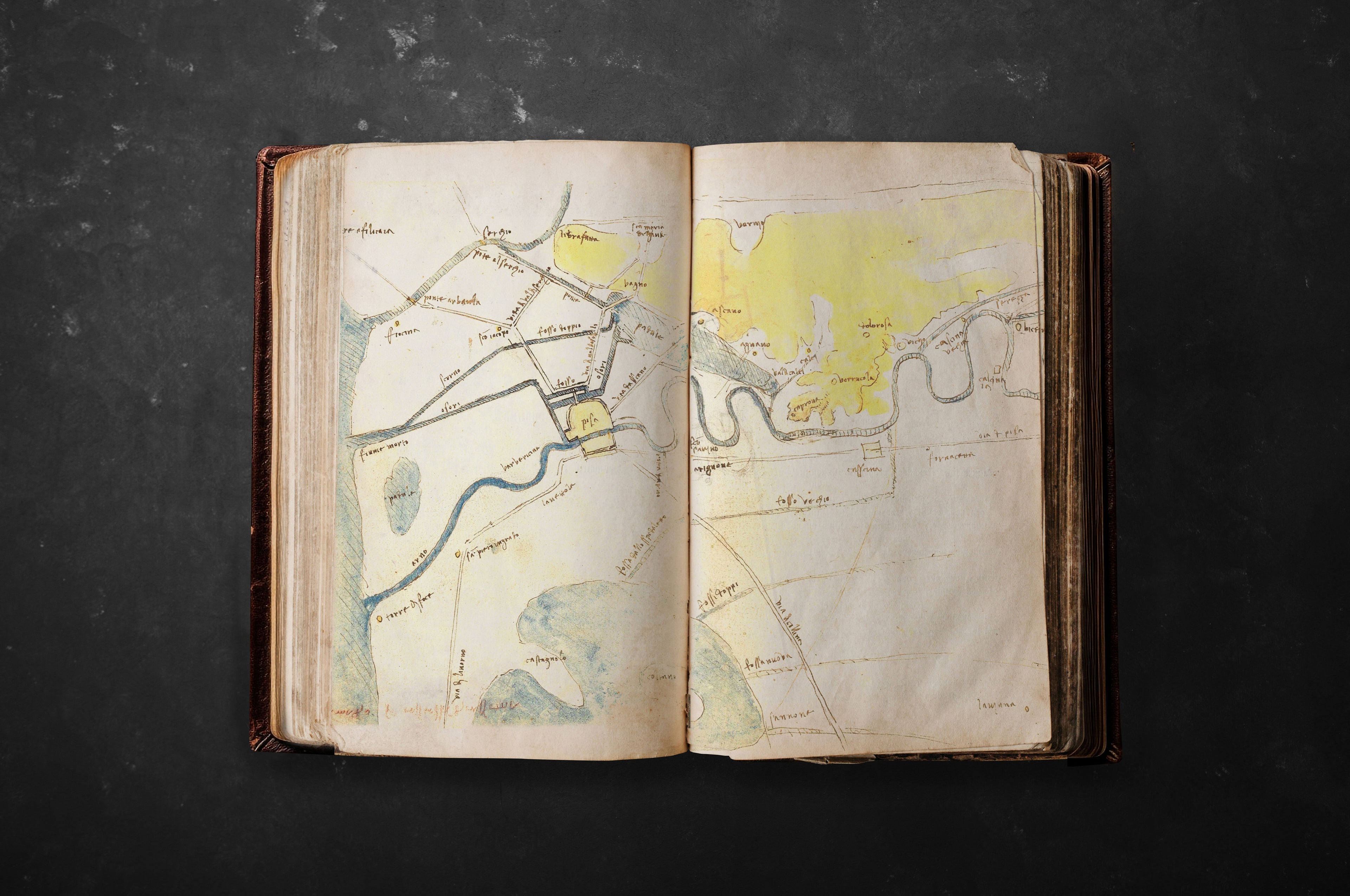
Codex Madrid II (Leonardo Da Vinci)
Codex Madrid II (Leonardo Da Vinci)
COLLECTOR'S EDITION
Secure and trusted checkout with
Couldn't load pickup availability
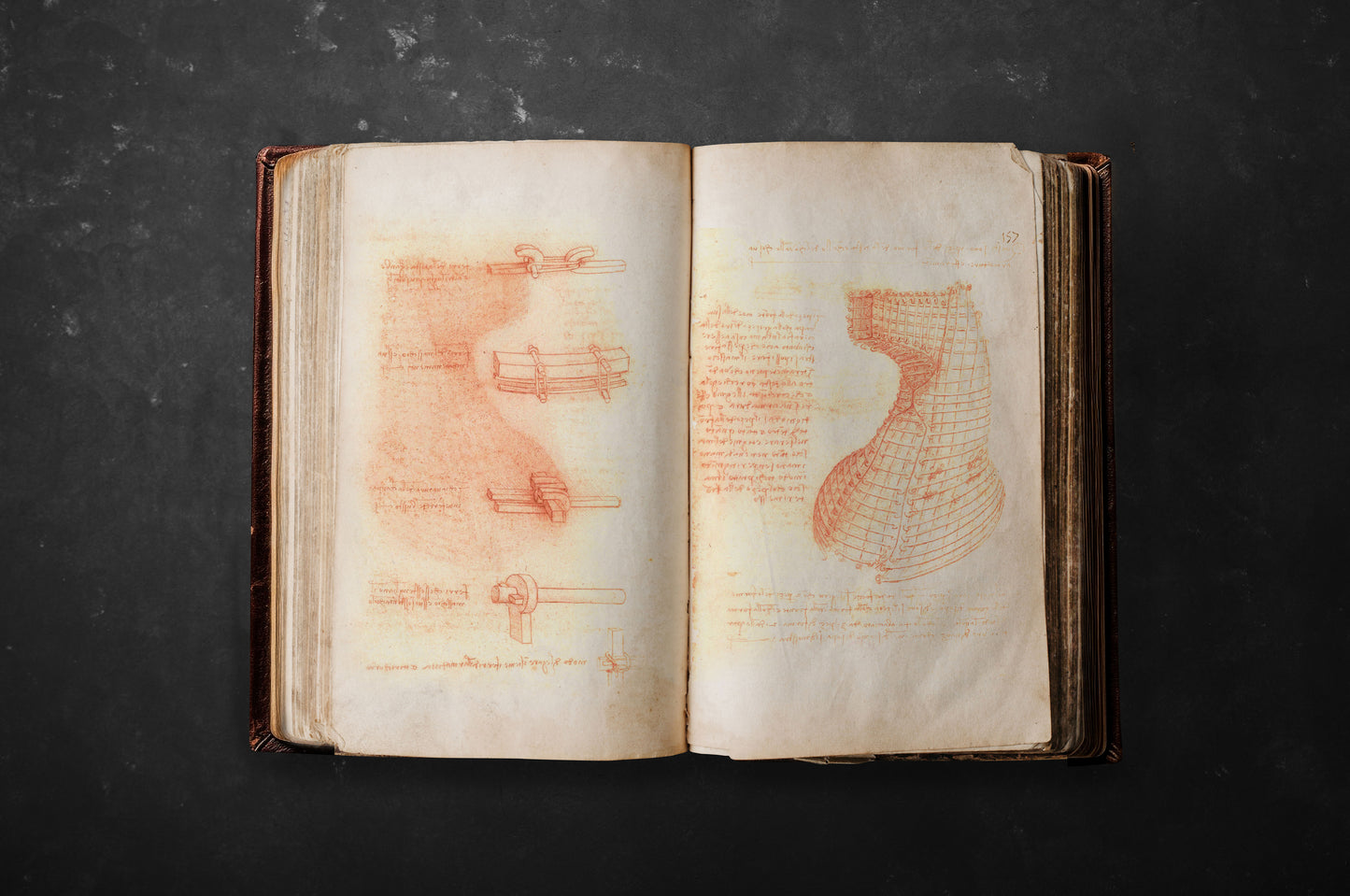
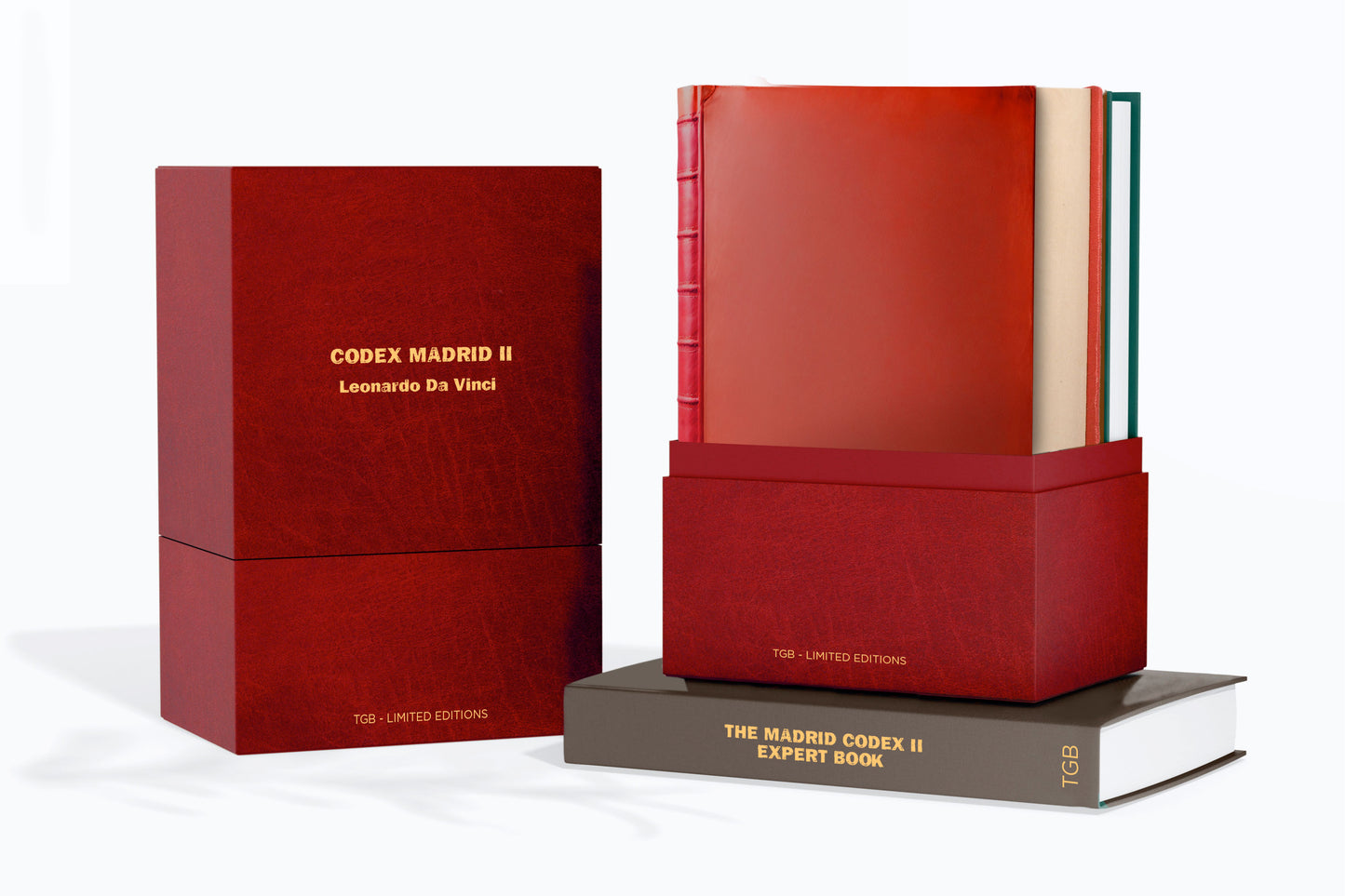
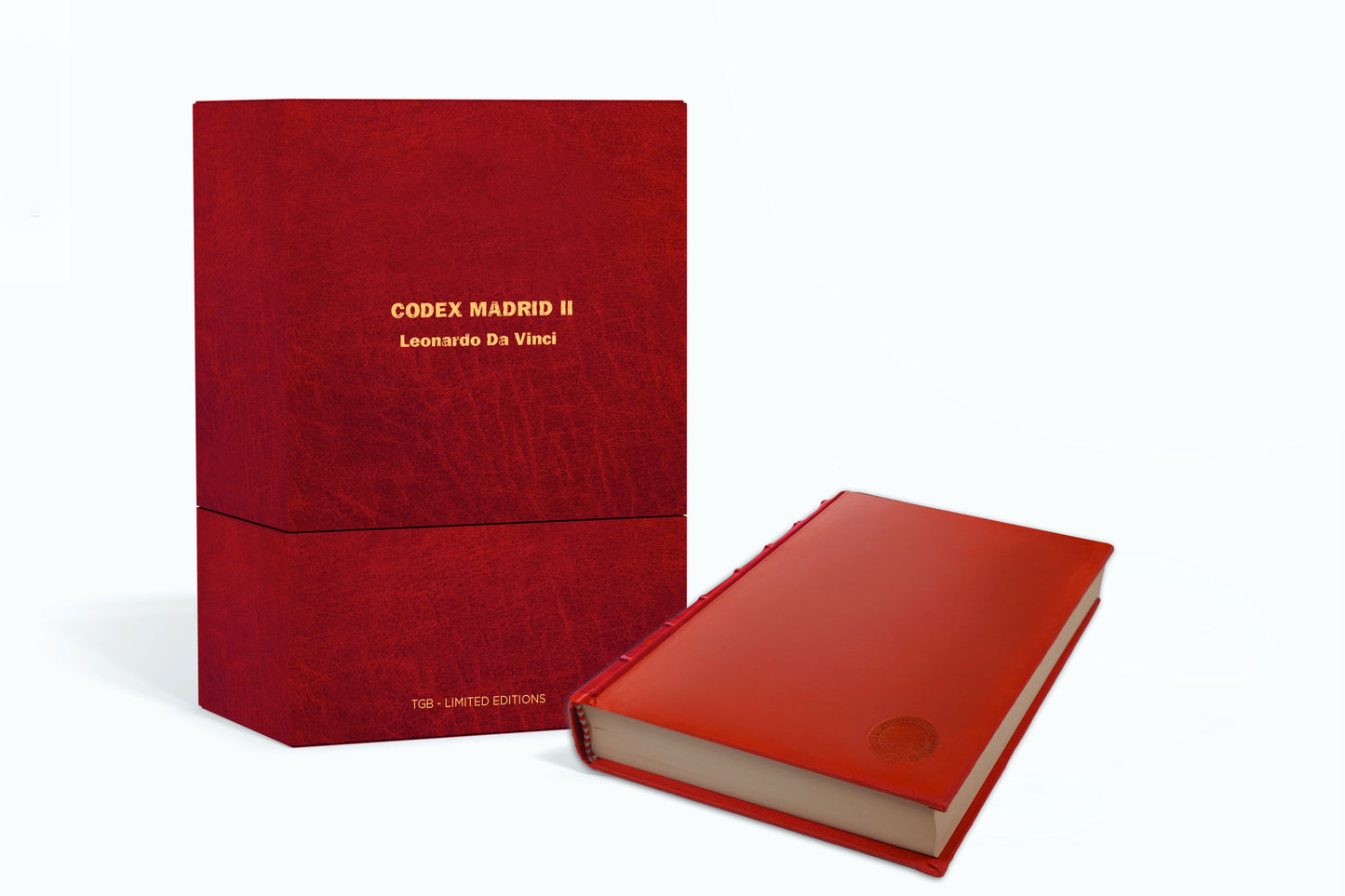
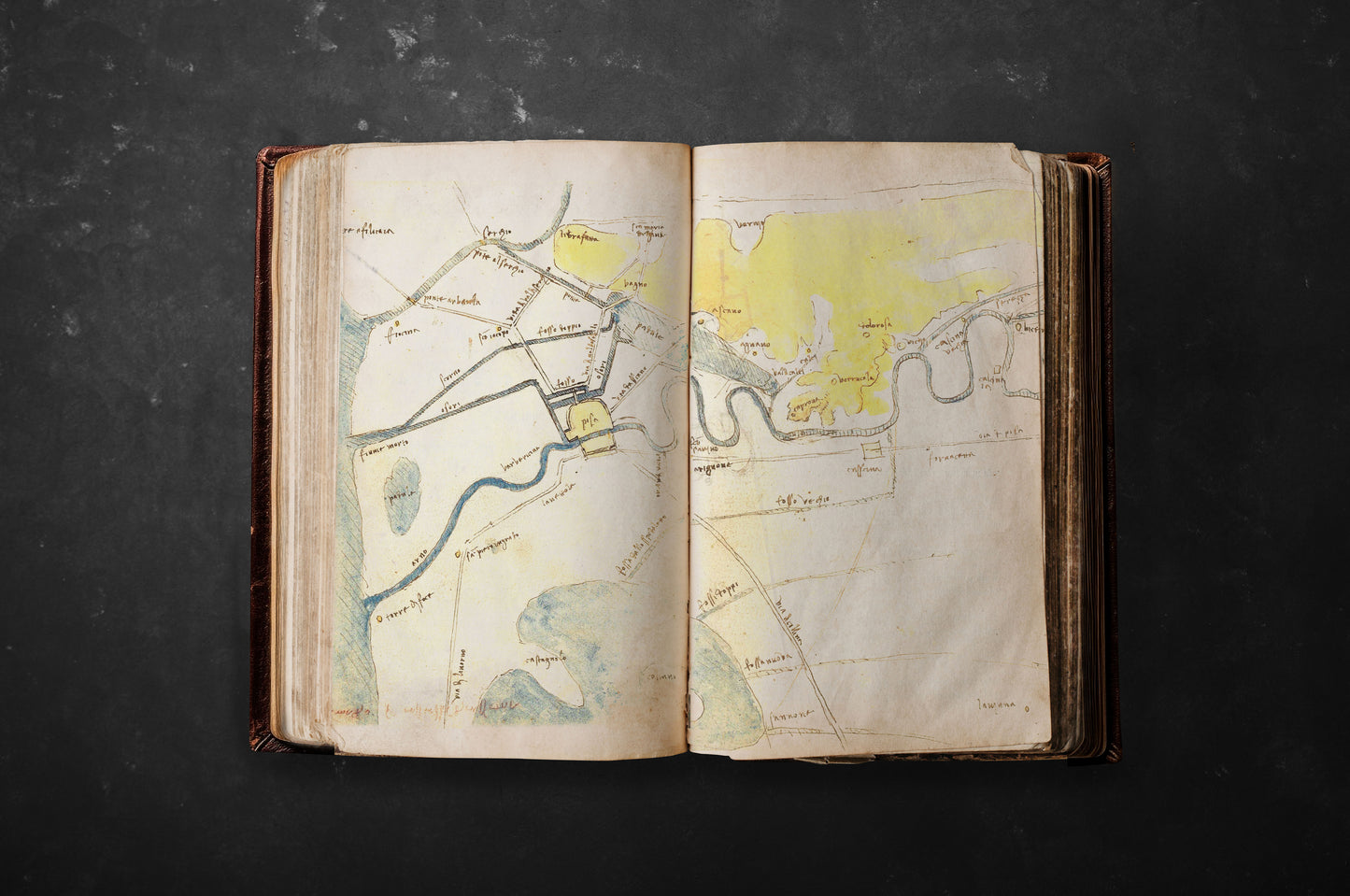
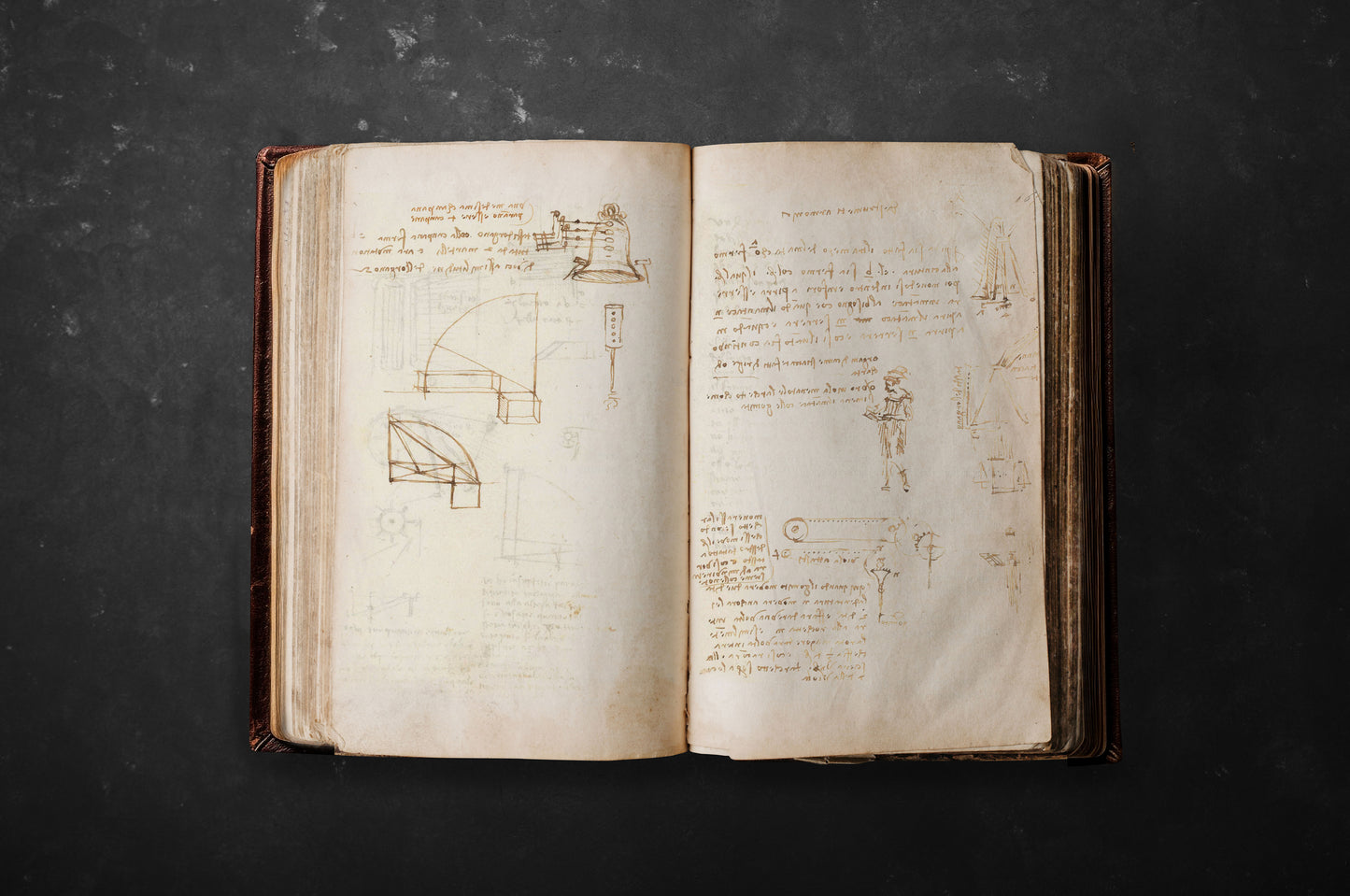
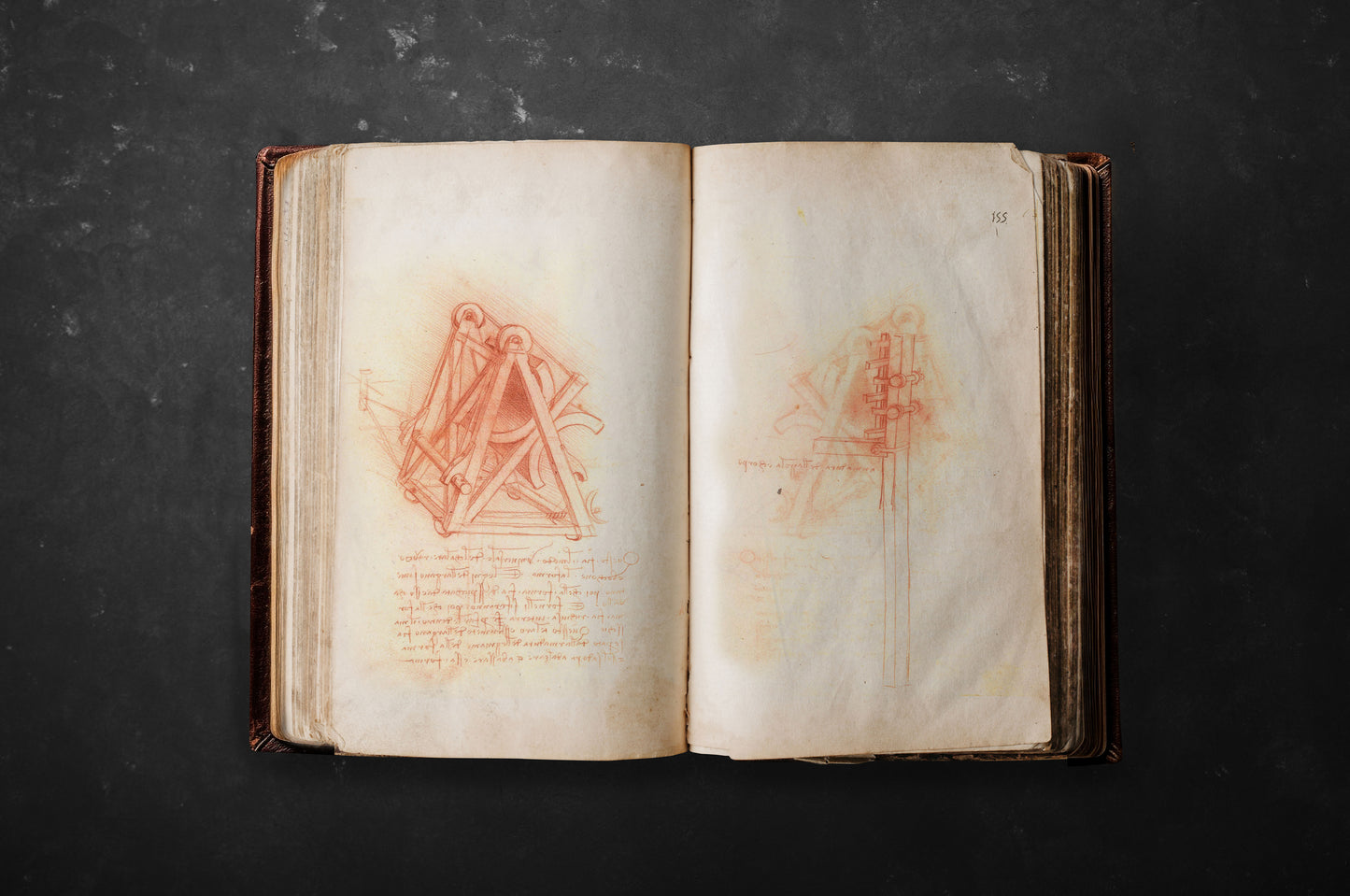
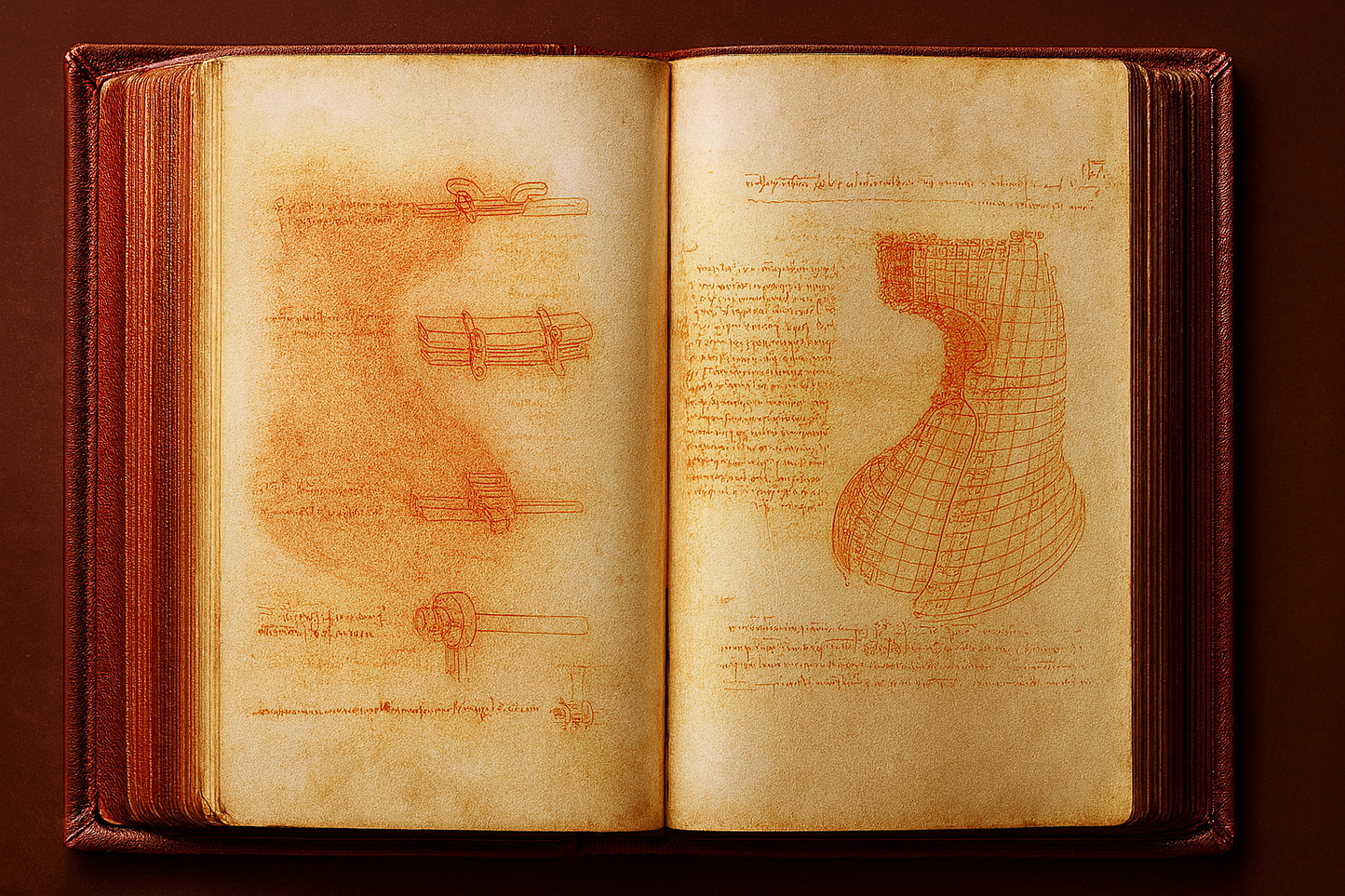
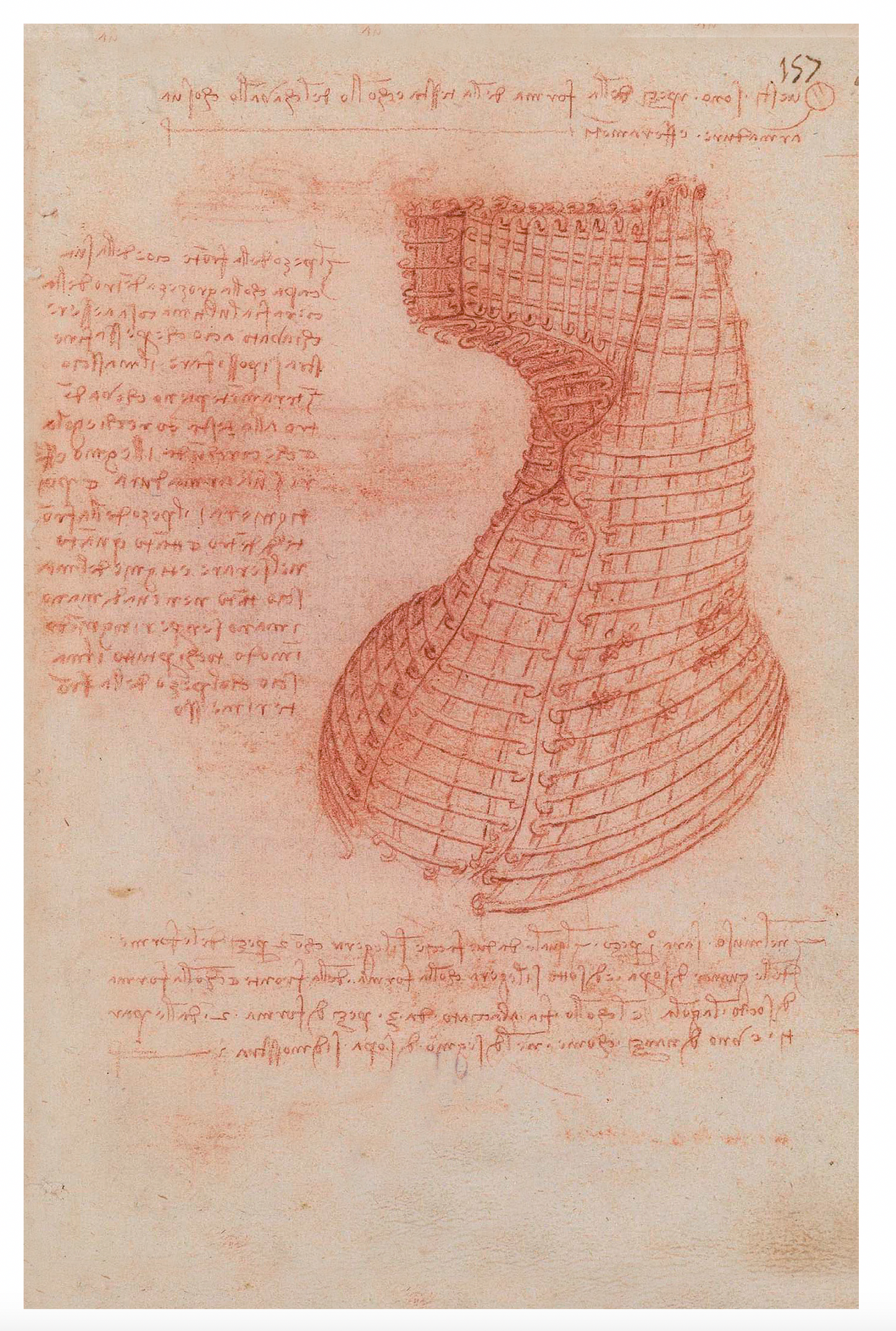
CODEX MADRID II -COLLECTOR'S EDITION-
Each deluxe limited edition contains (Only 999 copies):
*A facsimile edition of the original:
"Treatise on fortification, statics and geometry", 316 pages in its original 215 x 145 mm ( 8.46 x 5.70 in.) format.
-Hand-bound with ribs on the spine (vegan alternative to leather)
-Art paper with serrated edges reproduces the original.
-Exact reproduction of the original document (extent, color and size)
-Ten numbered art prints for collecting or framing
*A book with expert commentary on the codices and the life and work of Leonardo.
*An elegant case numbered from 001 to 999 in collector's edition.
$400 (Sold out)
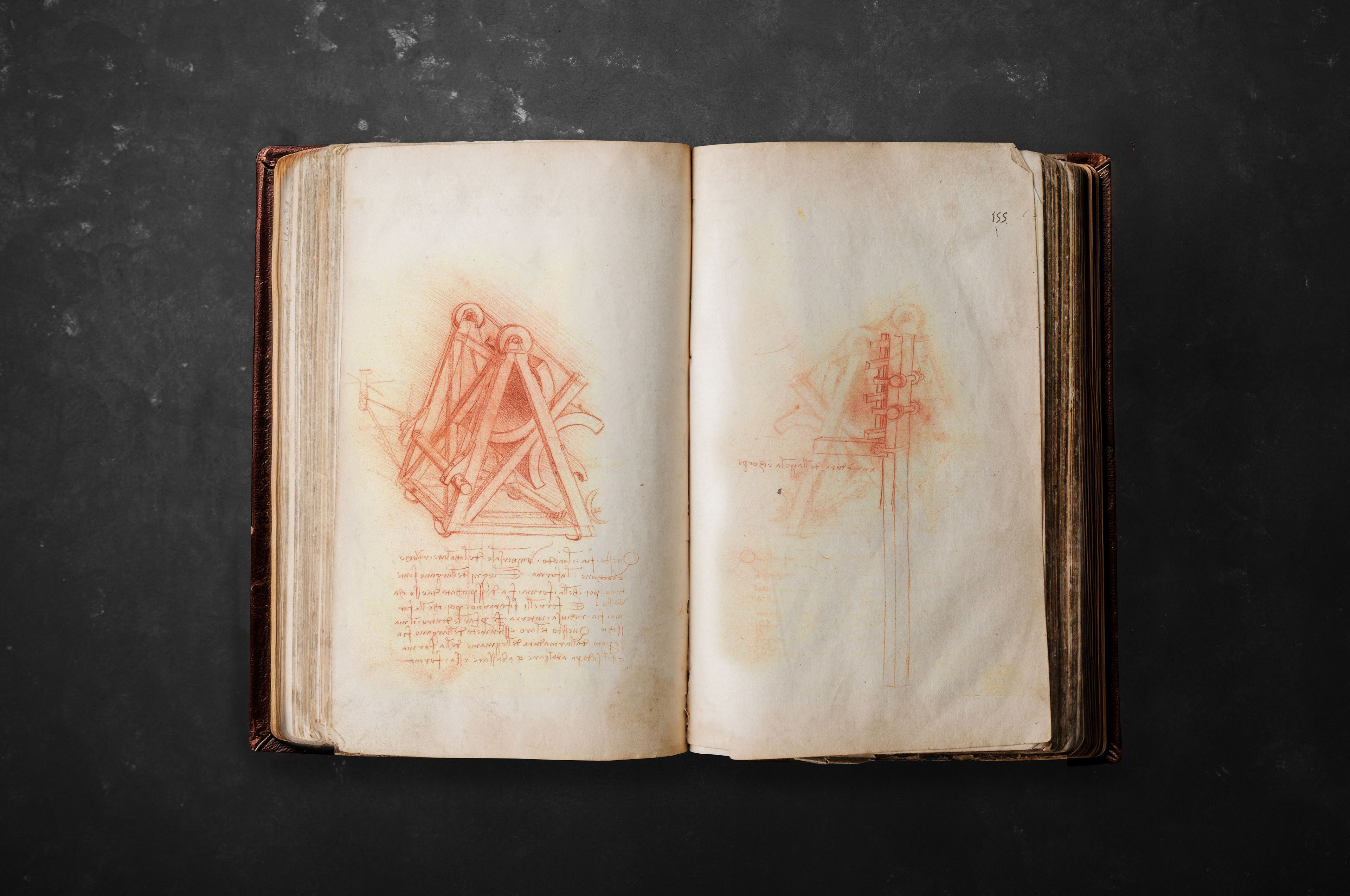
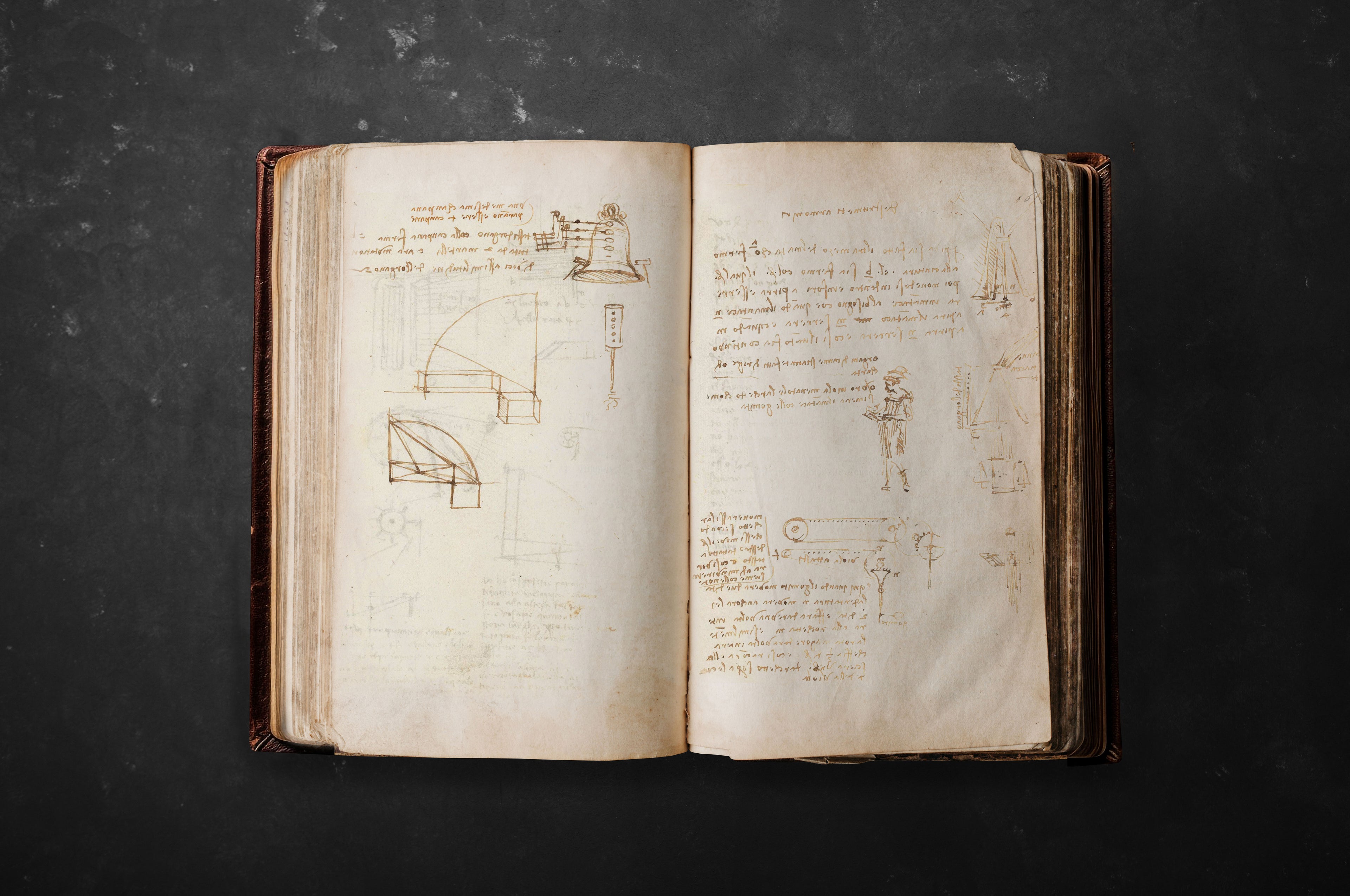

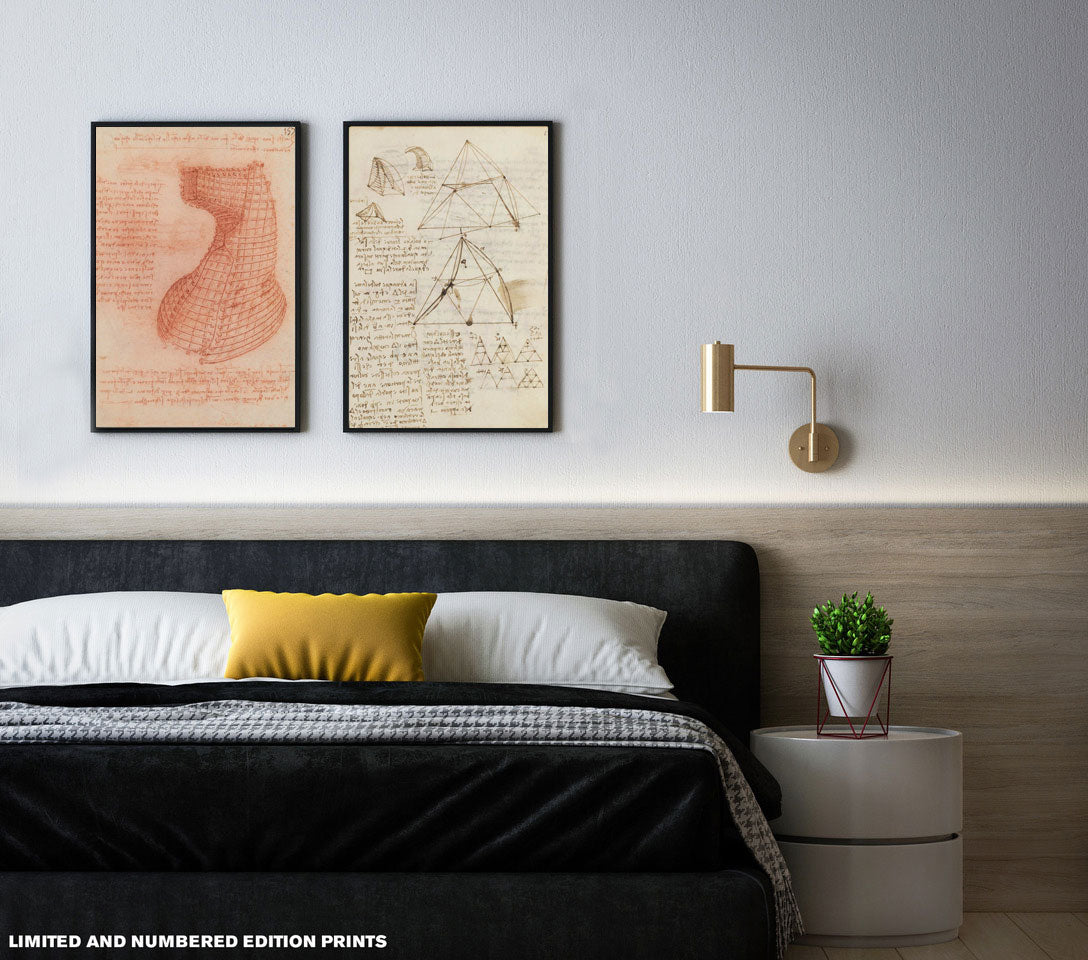
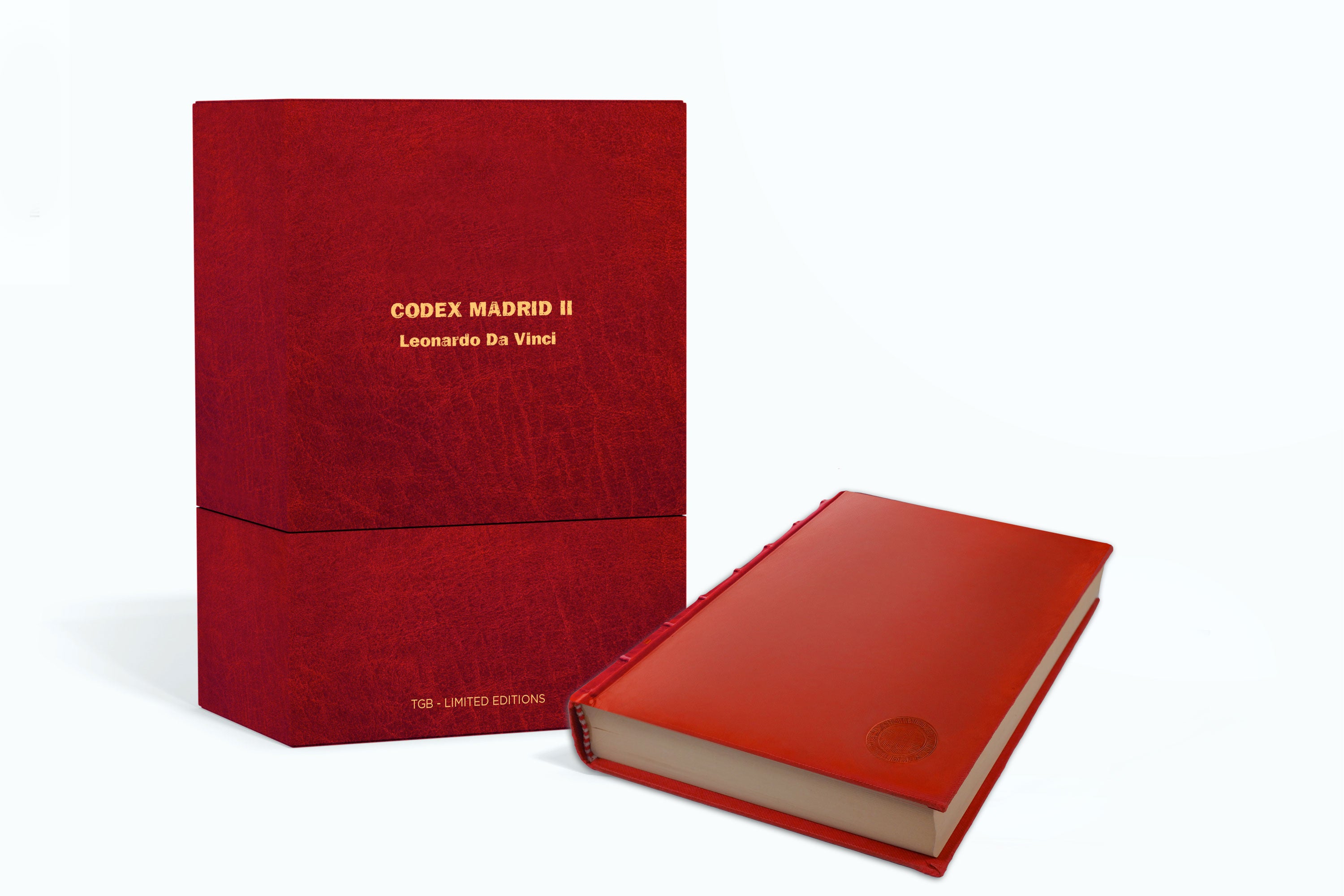
The Madrid Codex II
1- The Madrid Codex II, also known as "Treatise on fortification, statics and geometry"or "Madrid Codex of Leonardo da Vinci", is an important manuscript written by the famous Renaissance polymath Leonardo da Vinci. This codex is part of the Leonardo da Vinci manuscript collection and is preserved in the National Library of Spain in Madrid. In this notebook we can find a great variety of studies: topographical sketches, problems of nautical, architectural and military engineering, geometry (especially his studies on the "squaring of the circle"), the flight of birds and some scattered notes on personal matters (the list of books in his library, or of his clothing, for example).
The Madrid Codex II deals with different subjects and can be divided into two clearly differentiated parts; the second is the notebook detailing the casting of the Sforza Horse, which was added at an unknown date.
"Sector A": a notebook.
In many parts of this manuscript, the traced lines are made with sanguine, a reddish pigment that uses a variety of ferric oxide called hematite.
And that is why some drawings and strokes had to be reworked with black ink by the author, because the coloring substance of the sanguine, due to the fixation used, faded and blurred.
In this part of the manuscript, we can contemplate a plan of Pisa with the mouth of the Arno, reminding us that around 1503 Leonardo was immersed in one of his utopias: the project to divert the Arno River and build a canal linking Florence to the sea.( See the picture of the book above)
Musical instruments:
On folio-page 76r of this codex appear some partial sketches of two musical instruments: the viola organista and the paper organ. These sketches can also be found in Manuscript H of the National Institute of France and in the Codex Atlanticus of the Biblioteca Ambrosiana of Milan.
"Sector B": casting of the Sforza horse.
The second part (called "sector B") is monographic in content. It is entirely devoted to describing the technique of reproducing medals and plastic works in bronze.
An entire fascicle is dedicated to the casting of the "great horse of Milan" for the equestrian monument to Francesco Sforza. The Duke of Milan commissioned Leonardo, in 1482, to create what would have been the largest equestrian statue in the world.
Leonardo made a clay model that was more than 7 meters high and was eventually to be built in bronze. However, in 1499 the war came to Milan, the horse made in clay was destroyed and was never built. The bronze that was to be used to make the sculpture was used to make ammunition for the war.

Date of the Codex
The nature of some of the subjects treated (such as the project for the detour of the Arno river), allows us to affirm that Leonardo began writing sector A in the summer of 1503 and that his last notes are no later than mid-1505.
History and route of the Codex
The Codices were brought to Spain by Pompeo Leoni, a sculptor of Philip II. After several changes of ownership, they were transferred to the Library of the Monastery of El Escorial, finally passing to the Royal Library, where they remained lost for 150 years.
These manuscripts are of great importance in Leonardo's work, as they contain about 15% of Leonardo's notes that are referenced today, but they are also important for the quality and relevance of the subjects they contain, which represent one of the most important engineering treatises of the time.
When Leonardo died, they passed to his friend Francesco Melzi. Some fifty years later Pompeo Leoni, a sculptor in the service of Philip II, acquired them from his son Orazio and took them with him to Spain.1 When Leoni died in 1608, the manuscripts passed into the hands of Juan de Espina, a friend of Francisco de Quevedo y Villegas, according to gossip of the time: "a gentleman who lives alone in a mansion in Madrid and his servants are wooden automatons".
The Prince of Wales (Charles), on his visit to Madrid in 1623, was interested in the manuscripts, and Espina got out of the engagement by giving them to the King as a gift. The Codices arrived at the Royal Library in 1712, where for various reasons they remained lost until 1967, according to Martín Abad "due to the movement of the royal library to four different locations, to a fatal confusion of call numbers and to the aura of Leonardo da Vinci, which blinded many to attach their fame to that of the genius”.
A Treasure lost 150 years ago
It was a researcher at the University of Massachusetts, an expert in Medieval Castilian literature, who by chance, in 1967, discovered them, coming across two codices written by Leonardo Da Vinci in his own handwriting.
They had been lost in the archives of the National Library of Spain. An error made by the head librarian in the codification of their numbering meant that they had been lost for 150 years, until they were discovered by the American Jules Piccus, who was in the Library looking for medieval songbooks.
Of Leonardo's work, bound collections, notebooks and loose notes are preserved...the Codex Madrid being a bound collection.
Leonardo's death is the beginning of the dispersion and loss of two thirds of the fifty thousand original multidisciplinary documents written in old Tuscan and codified by him. Each manuscript, page, sketch, drawing, text and note was fully considered a work of art. Only about thirteen thousand documents remain, most of which are preserved in the Vatican City archives.
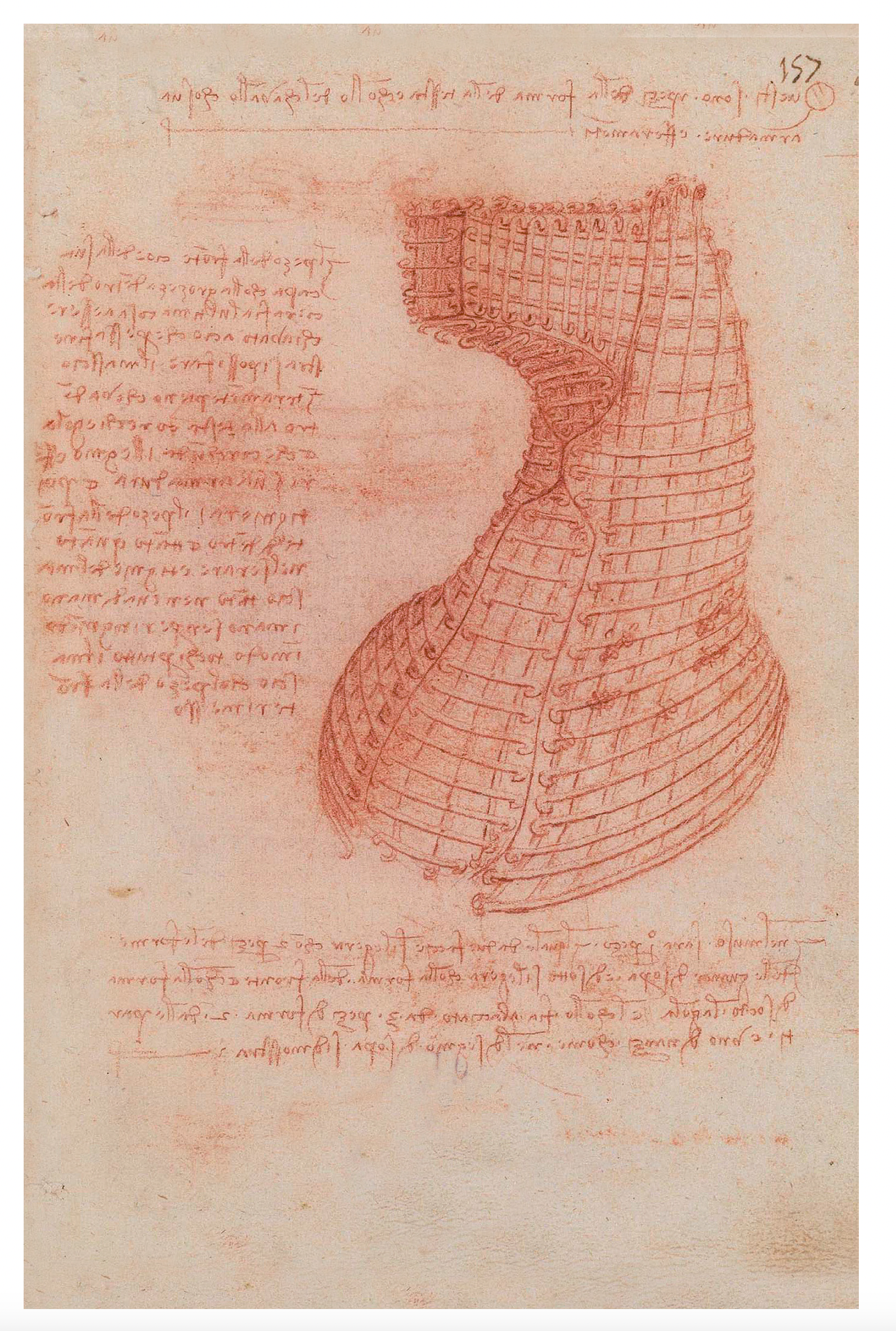
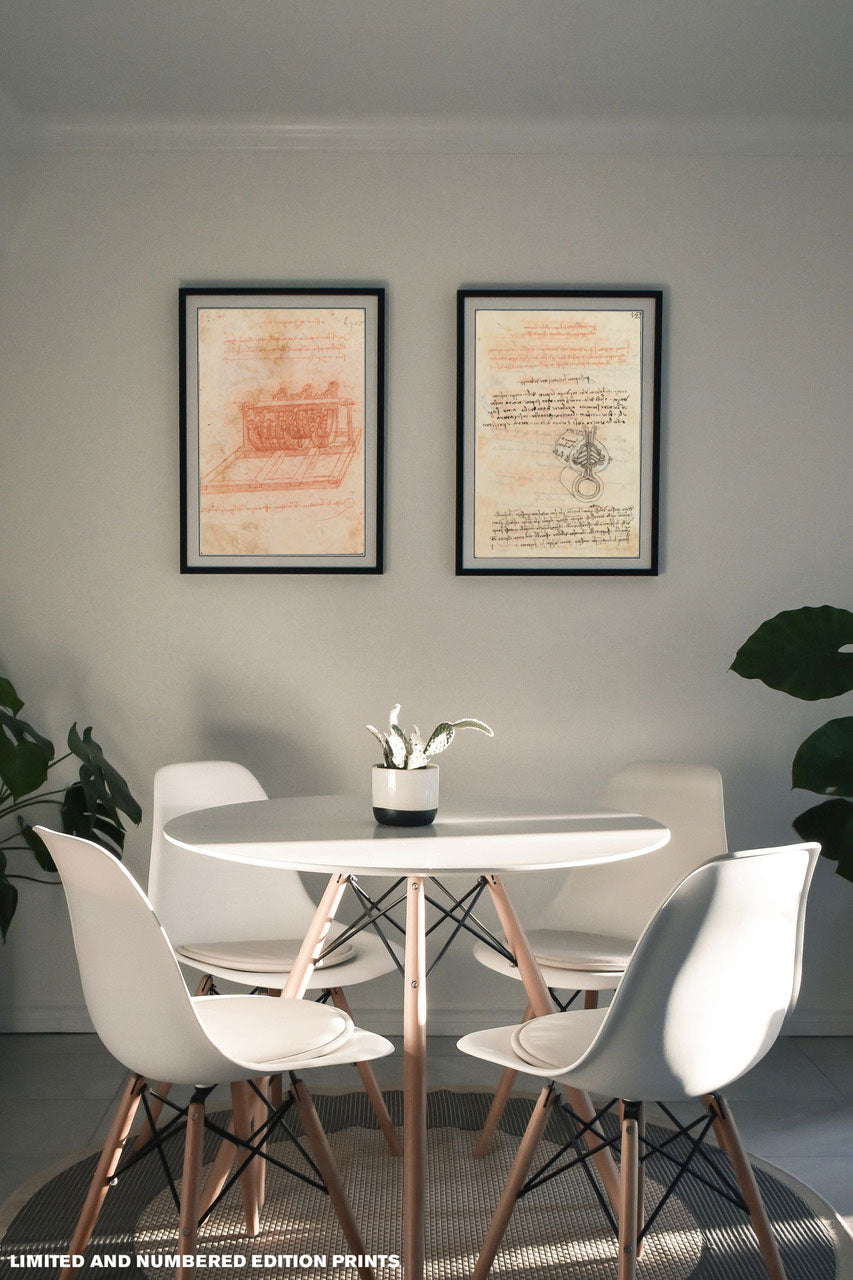
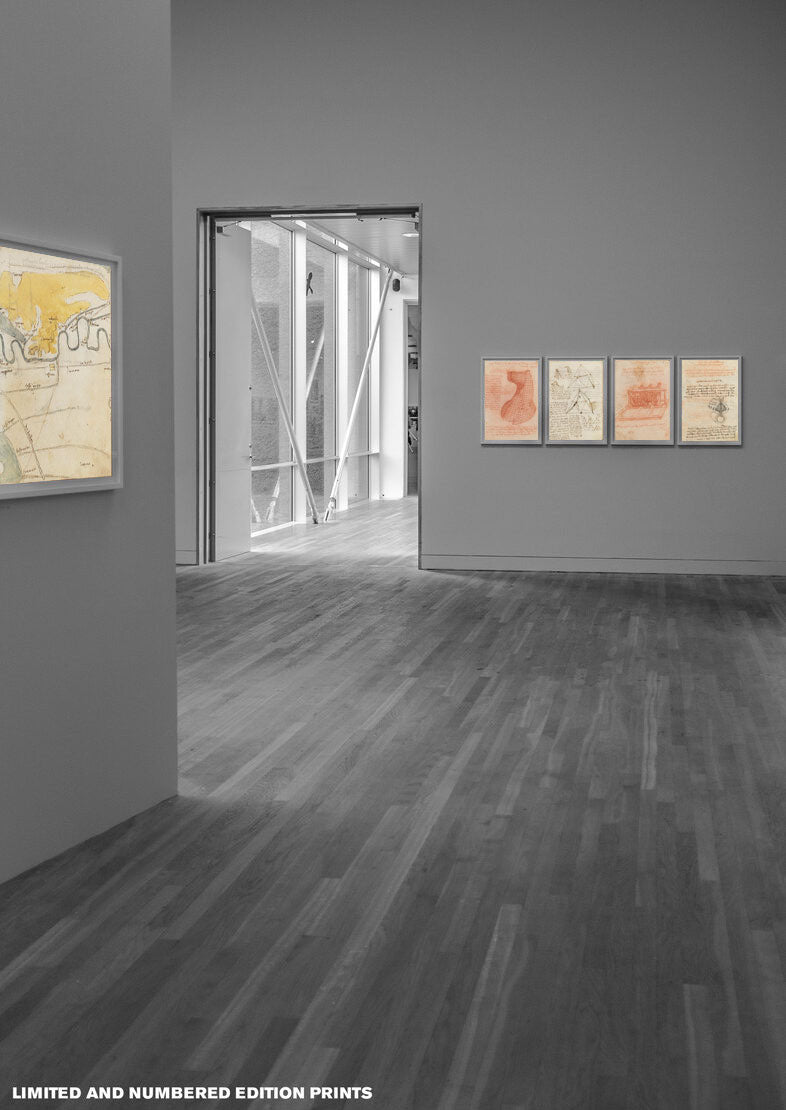
What's Included
*A FACSIMILE EDITION OF THE ORIGINAL
"Treatise on fortification, statics and geometry", 316 pages in its original 215 x 145 mm ( 8.46 x 5.70 in.) format.
Hand-bound with ribs on the spine.
(vegan alternative to leather* )
Art paper with serrated edges reproduces the original.
Exact reproduction of the original document (extent, color and size)
*The FSC® Chain of Custody certification identifies all of those products realized starting from raw materials deriving from forests managed according to the international Forest Stewardship Council standards, by certified companies. FSC® certified products available on demand.
*The PETA-Approved Vegan certification ensures that no type of animal, directly or indirectly, is used or abused for the processing and production
*TEN ART PRINTS FOR COLLECTING OR FRAMING
10 art prints on Favini Plus fine art paper are included to own an exclusive private art collection with Leonardo da Vinci's handwritten notes.
*A BOOK WITH EXPERT COMMENTARY ON THE CODICE AND LEONARDO´S LIFE AND WORK
Hardcover book with dust jacket and embossed gold lettering
*AN ELEGANT HANDMADE CLOTH CASE
An elegant handmade cloth case that opens in half, numbered from 001 to 999

CONTACT US FOR ANY QUESTIONS YOU MAY HAVE
Others also love...
-
300 YEARS BEFORE COLOR, Gold Butterfly Edition.
Regular price $170.00Regular priceUnit price / per -
300 YEARS BEFORE COLOR, Velvet Royal Blue Edition.
Regular price $280.00Regular priceUnit price / per -
300 YEARS BEFORE COLOR Rothko Tribute Edition
Regular price $280.00Regular priceUnit price / per -
300 YEARS BEFORE COLOR Black & Gold Edition
Regular price $350.00Regular priceUnit price / per -
300 YEARS BEFORE COLOR Brown & Ivory edition
Regular price $350.00Regular priceUnit price / per -
Codex Madrid I and II (Leather Edition)
Regular price $480.00Regular priceUnit price / per -
Codex Gigas XXL
Regular price $1,200.00Regular priceUnit price / per -
Codex Trivulzianus
Regular price $250.00Regular priceUnit price / per
